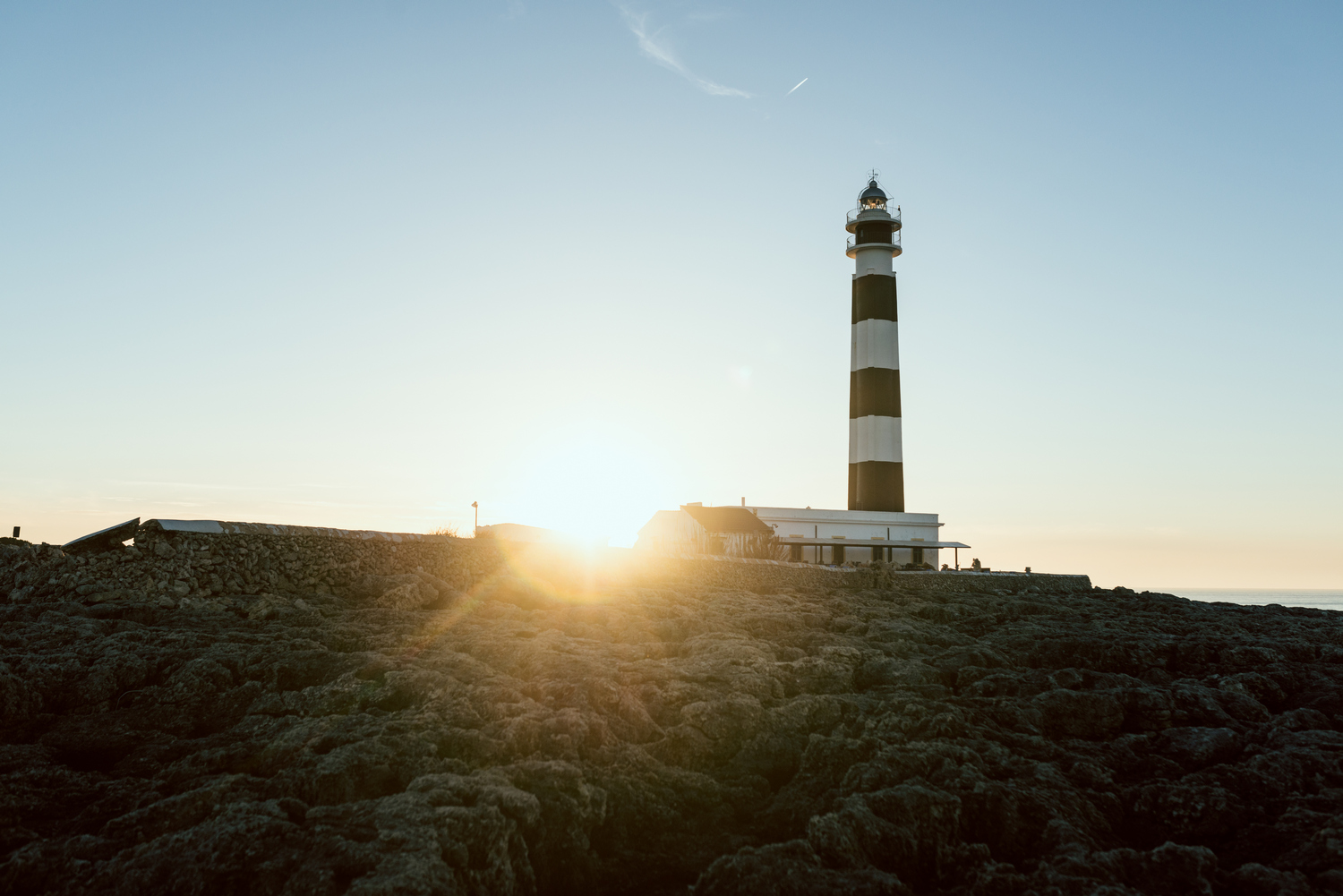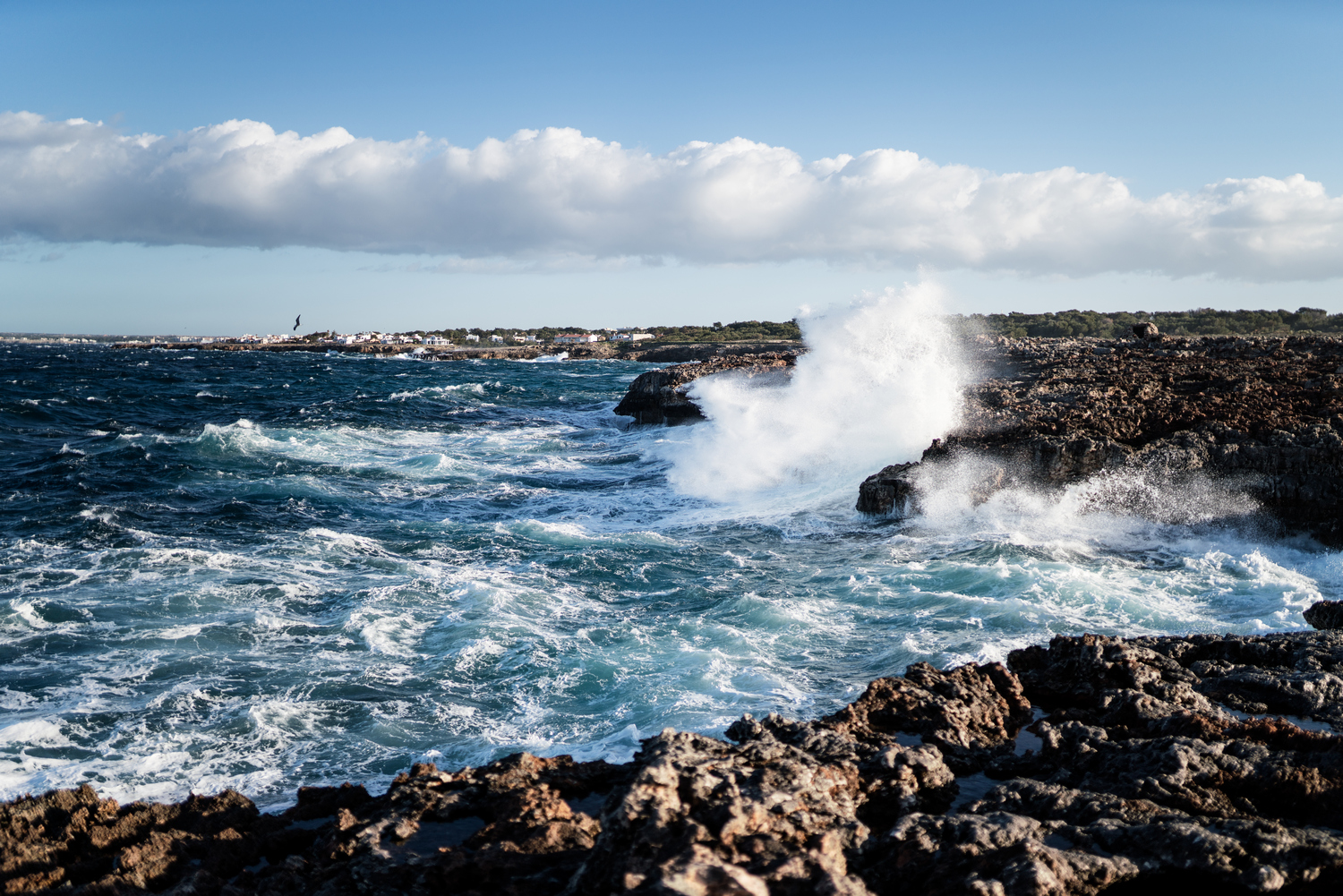Rocky terrain and irregular surface but with hardly any unevenness leads the participants to the south of the island. The path follows the entire profile of the coast, passing through several coves and crossing the extensive urbanized areas just south of Ciutadella. The emblematic Farola d’Artrutx marks the end of the stage.
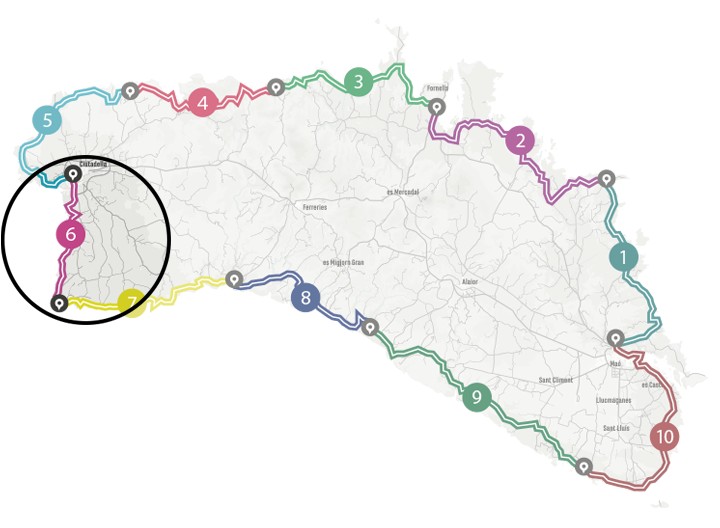
Camí de Cavalls 360º offers a good number of modalities, formulas and formats for participants to enjoy the route with a path adapted to their pace, level and time availability. The Hiking and Trekking 10 stages program is one of the best suited to hikers with some experience and looking for medium difficulty routes.
The 185 kilometers of distance and 2,741 meters of elevation gain are divided into ten feasible days of about twenty kilometers on average. Participants should only think about enjoying the landscapes and spots through their path. The organization team will take care of the rest: advice on the route and possible variants, logistical issues and even transfers to accommodation when it is not possible to reach them walking.
STAGE #02: FAVÀRITX – SES SALINES DE FORNELLS
STAGE #03: SES SALINES DE FORNELLS – CAMÍ DES ALOCS
STAGE #04: CAMÍ DES ALOCS – CALA MORELL
STAGE #05: CALA MORELL – CIUTADELLA
STAGE #06: CIUTADELLA – CAP D’ARTRUTX
STAGE #07: CAP D’ARTUTX – CALA GALDANA
STAGE #08: CALA GALDANA – SON BOU
STAGE #09: SON BOU – BINIBÈQUER VELL
STAGE #10: BINIBÈQUER VELL – MAÓ
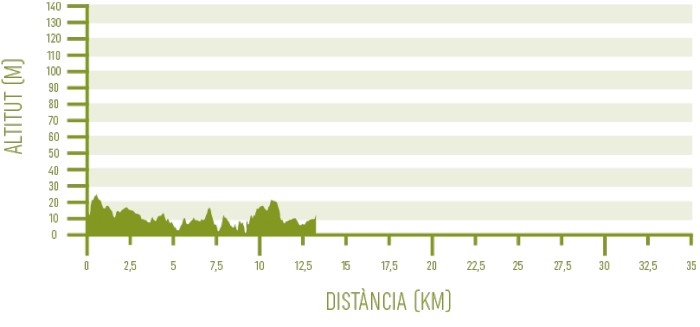
Distance: 13,05 km / Elevation gain: 25 m
This is the quietest and least demanding stage of the entire route, so many participants extends their stay in Ciutadella to thoroughly explore the city before heading south again.
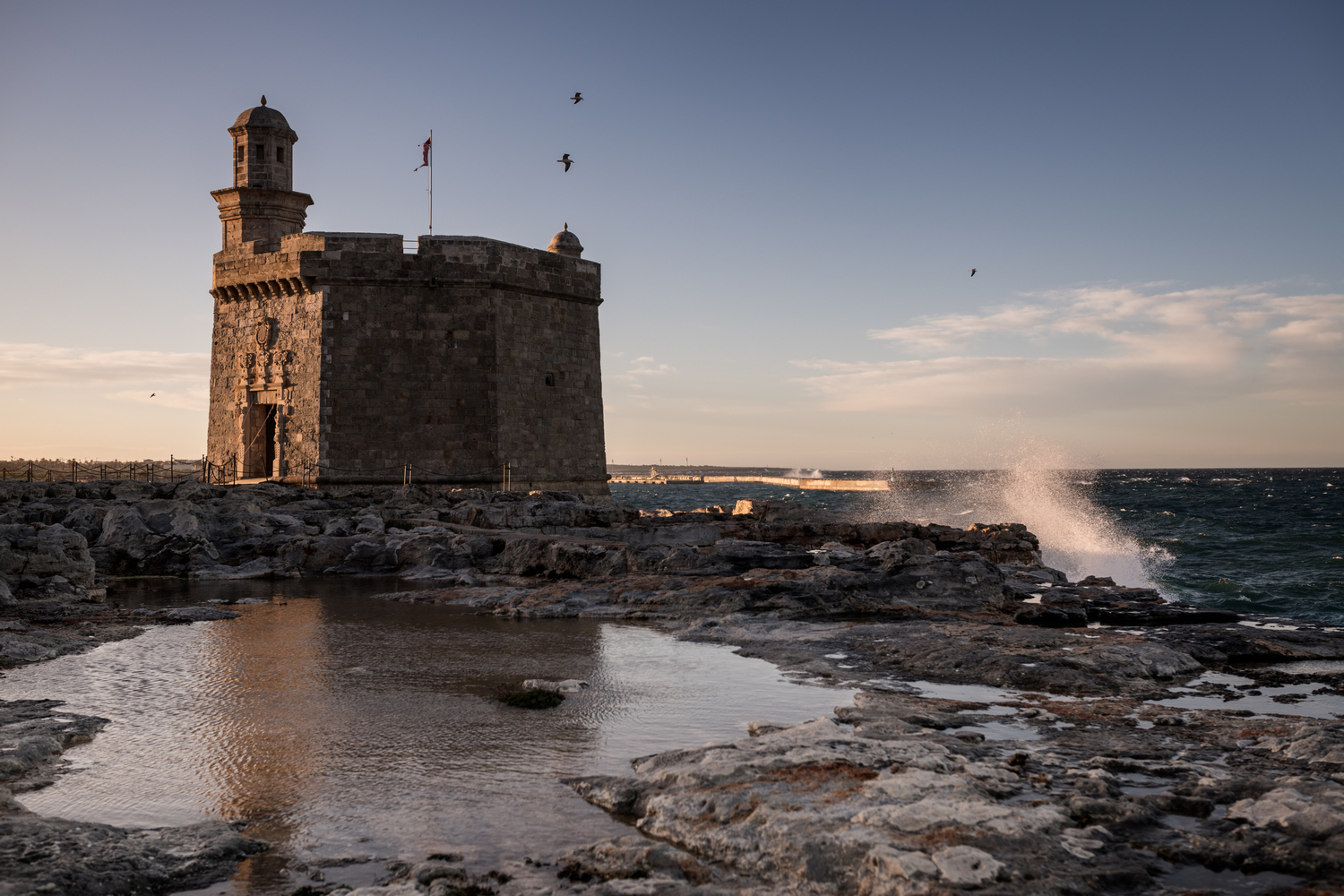
Ciutadella
Above the port –through which Ciutadella is reached in the previous stage–, on its south side and connected to it by steep streets equipped with stairs, there are the City Hall building and the old town of Ciutadella. It is worth getting carried away by the cobbled streets of the town, such as the emblematic Carrer de Ses Voltes, and breathing in the historic atmosphere of the old capital of Menorca.
Strolling aimlessly, it is possible to see the stately facades of many palaces and come across charming little squares by surprise. There is no shortage of proposals for terraces where you can have a drink, as well as nice shops selling typical products and souvenirs. In the heart of the old town, its most representative building: the Gothic cathedral of Santa Maria de Ciutadella has stood since the 13th century. Culture lovers have another must-see at the Museu Diocesà.
The neighboring squares Plaça des Born and Plaça des Pins exert an unquestionable gravity force in Ciutadella. The first one is located in front of the main façade of the Town Hall, while the second one –with pleasant benches to sit in the shade and surrounded by terraces of bars and restaurants– faces the south façade of the city council.
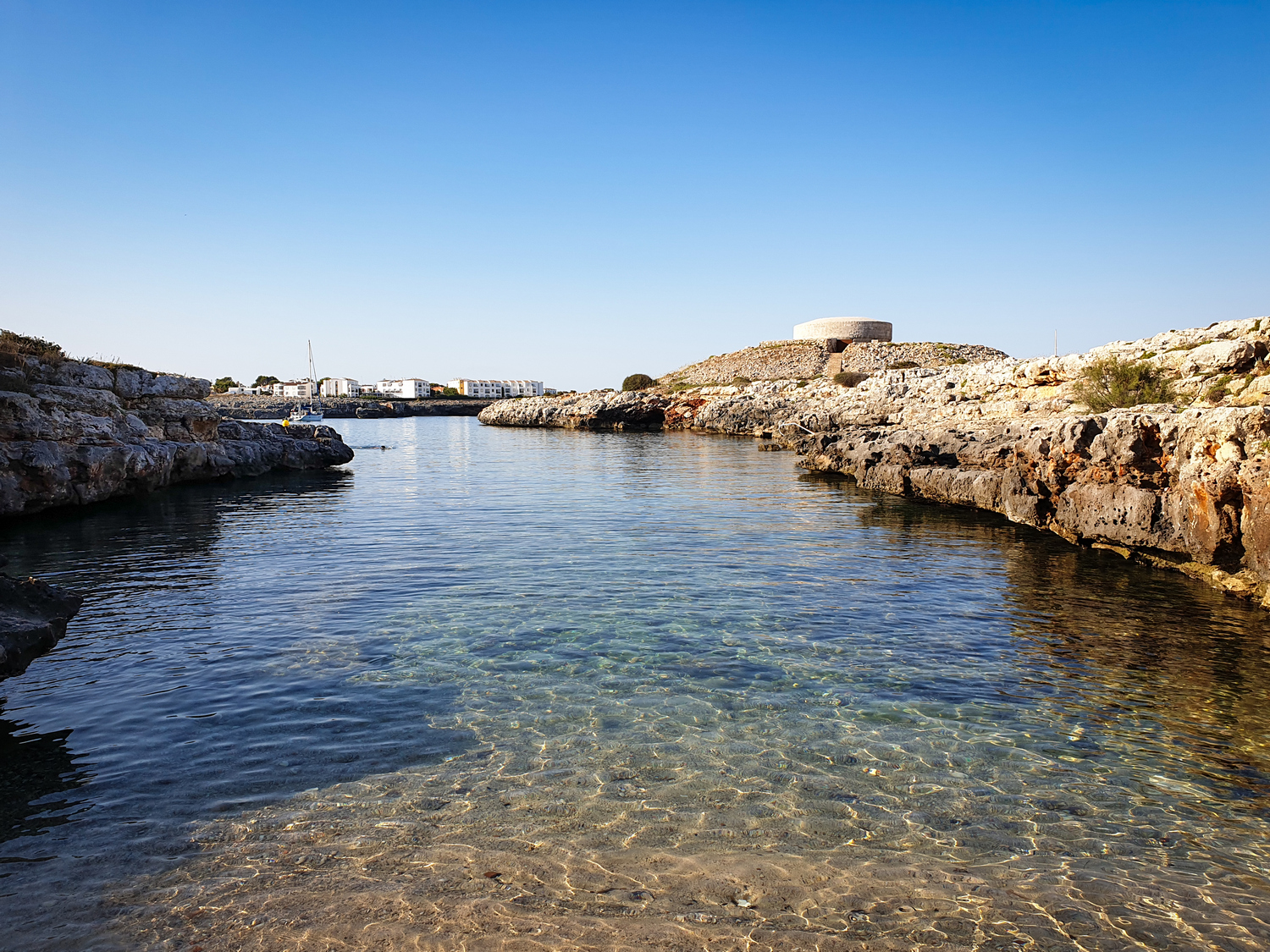
From Ciutadella to Cala Santandria
To leave Ciutadella and carry on with the Camí de Cavalls 360º route, you just have to take Carrer Mallorca from the Plaça des Pins. A bridge at the end of this street crosses the charming cove Cala des Degollador, also known as Platja Gran, still within the urban fabric of the city. On the south side of the cove, the GR turns right along Avinguda de Mar to once again gain views of the Mediterranean and follow the coast during the rest of the stage.
The first half of the day’s route runs on asphalt. When you cross the residential area of Son Oleo, you reach the access to the modern terminal of the commercial port of Ciutadella. From there the residential area of Sa Caleta extends, where you can see the Torre des Castellar.
This defensive circular building was built between 1799 and 1802 by the British in a strategic position at the entrance to the small Caleta d’en Gorries and the deepest Cala de Santandria. The latter has two white sand beaches and calm waters, is equipped with all kinds of services and enjoys a family tourism environment during the summer.
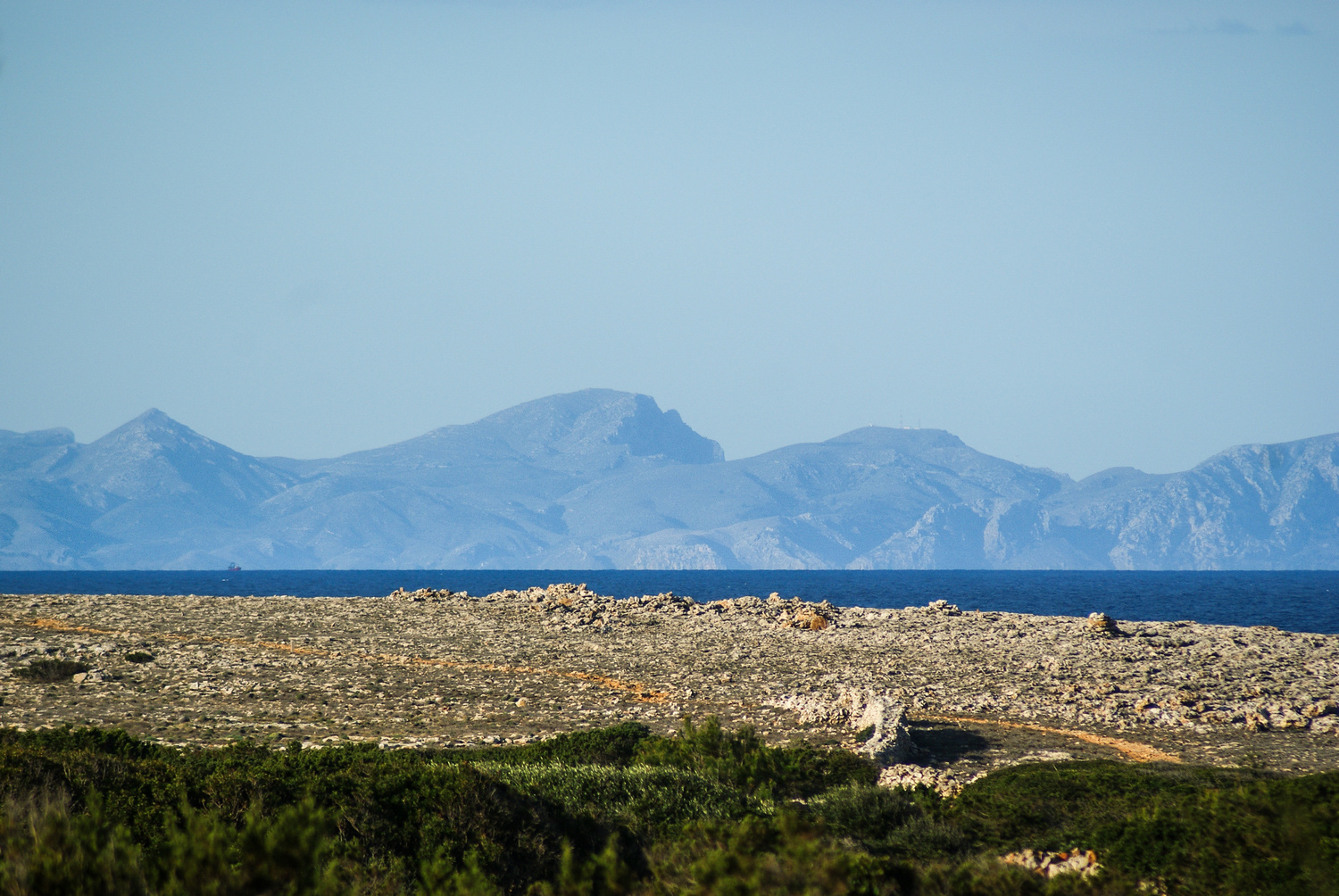
From Cala Santandria to Cap d’Artrutx
The last residential area before the end of the stage is Cala Blanca. The asphalt gives way again to the rocky areas of the coast, with some samples of low vegetation. Rosemary and junipers are the best represented species, although during spring it is easy to discover many more, such as orchids, thanks to the attractive colors they display when they bloom.
Leaving Cala Blanca, the path passes through S’Aigua Dolça, a sea inlet with a sandy seafloor, and a little further on through Cala en Bastó. Then it crosses the lands of Son Morro and Son Olivar, although it is easy for walkers to keep their faces turned to the right and not stop contemplating the sea, especially in dusk and sunset. In addition, on clear days the coast of the neighboring island of Mallorca can be seen with the naked eye.
The terrain remains rocky and irregular, but it hardly shows any unevenness along the entire route until Cap d’Artrutx. Once again, a residential area with summer houses anticipates the arrival right at the lighthouse that marks the southwestern corner of Menorca and the end of the stage. The lighthouse Farola d’Artrutx, with a 34 meter high tower, has a restaurant with a terrace open only during the summer months.
